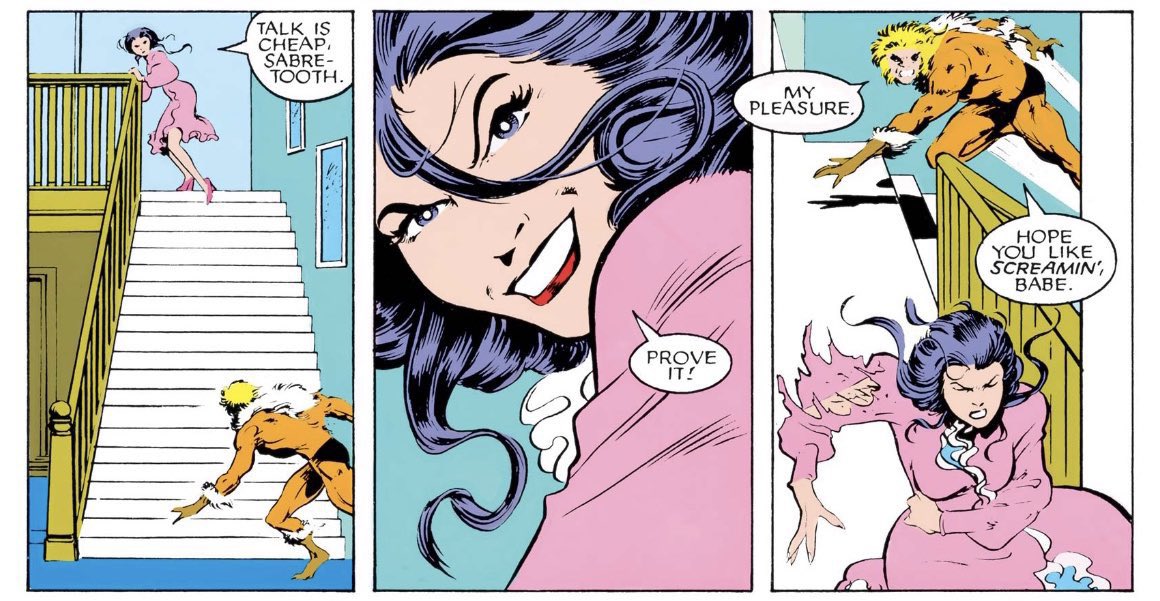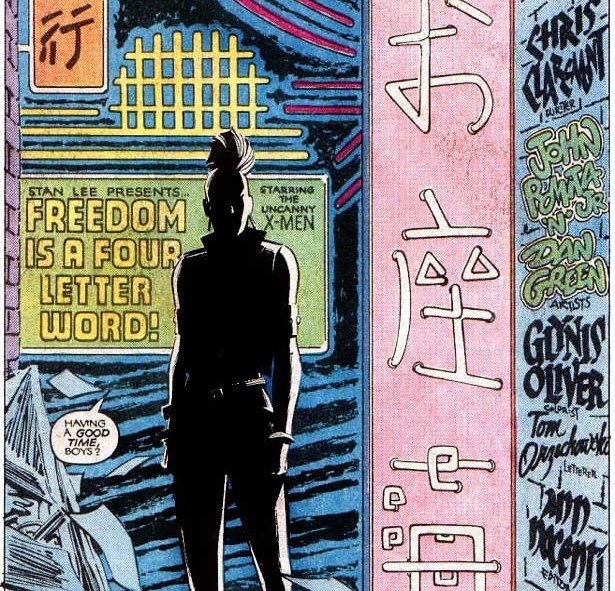In a 1982 interview Claremont describes his unique portrayal of women in comics as a conscious decision, made under epiphany. The result of this is one of mainstream comics most important and influential experiments in representation. #xmen 1/6 

"There was a moment I think when I made a conscious decision by looking around seeing how few people were portraying heroic rational sensible women in books and comics. I thought, "I'll fill that vacuum - since no one else is doing it, I'll give it a try." 2/6 

"Because in a sense I wondered in the ultimate kind of fiction, science fiction, could I put myself in the head of this being who was totally unlike me? Women tend to get very short shrift in comics. " 3/6 

"They are either portrayed as wallflowers or as super-macho insensitive men with different body forms, who almost invariably feel guilty about their lack of femininity. And it's always seemed to me that, why does this have to be exclusive?" 4/6 

"Can you not have a woman who is ruthless and capable and courageous and articulate and intelligent and all the other buzzwords - heroic when the need arises, and yet feminine and gentle and compassionate, at others?" 5/6 

The result, arguably, is what Gail Simone (@GailSimone) refers to as a “sea change” in the representation of women in superhero comics in general. 6/6 

If you’d like to read the interview, it can be found in:
Sanderson, Peter. The X-Men Companion II. Stamford: Fantagraphics Books, 1982. p23-24
Sanderson, Peter. The X-Men Companion II. Stamford: Fantagraphics Books, 1982. p23-24

• • •
Missing some Tweet in this thread? You can try to
force a refresh






















